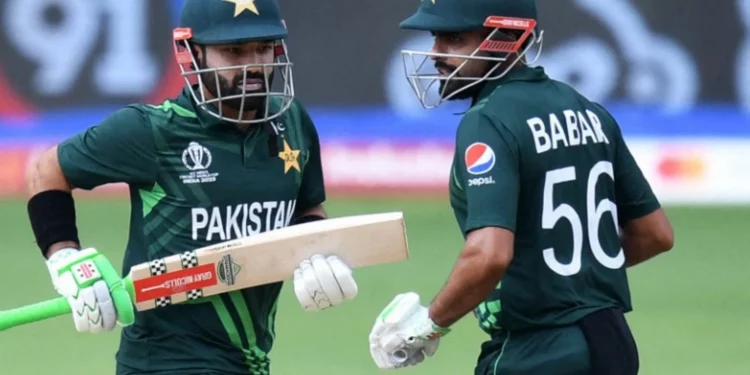BBL players from Pakistan have been granted permission to participate in the league despite worries that they would be affected by the PCB’s unwillingness to grant No Objection Certificates for international competitions.
Sumair Ahmad Syed, the chief operations officer of the PCB, sent out a message to agents and players in late September, alerting them to the board’s intention to prohibit participation in T20 competitions.
On Saturday, though, Todd Greenberg, the CEO of Cricket Australia, affirmed that the Pakistani players will show up for the BBL on time.
“That came through last week,” stated Greenberg. “So they’ll all be playing, they’ve all been cleared to play, which we’re really excited about because we’ve got some great Pakistan players in the BBL, so looking forward to seeing them here this summer.”
Mohammad Rizwan (Melbourne Renegades), Haris Rauf (Melbourne Stars), Shadab Khan (Sydney Thunder), Shaheen Shah Afridi (Brisbane Heat), Hasan Ali (Adelaide Strikers), and Babar Azam (Sydney Sixers) have contracts for the competition, which starts on December 14 and ends on January 25.
The matches between Babar and Shaheen, scheduled for January 5 and 18, are highly anticipated head-to-head matches. He and Shadab will be in the same side, and when the Pakistani players play the Sydney Thunder, they will also face R Ashwin.
The BBL saw a major turning point when Thunder signed Ashwin, whose contract became season-long after he was not purchased at the ILT20 auction. It has sparked discussions about whether more Indian athletes will retire later in their careers to pursue chances abroad, with Virat Kohli’s name unsurprisingly high on the list despite the fact that he hasn’t spoken anything about his future.
“Short, medium term I think it is realistic over time,” Greenberg stated when asked if more Indian players would be able to register for the league. “The conversation will remain open. In my opinion, the arrival of Ravichandran Ashwin is a significant milestone for the BBL and will demonstrate the league’s ability to attract Indian talent. I believe it will be interesting to observe how that plays out over time. We are currently having an open discussion on whether or not to include private capital in the BBL, which will determine some of that.
Greenberg and chair Mike Baird are hopeful that progress will be achieved by the end of the year as Cricket Australia continues to explore the possibility of private involvement in the BBL, even though some states are still unsure of the best course of action.
“We should have aspirations to make sure the very best players, both here in Australia and globally, can play in the BBL,” said Greenberg. “Players have leverage and the opportunity to play anywhere in the world, therefore that costs money. That is one of the main reasons [why] we would think about introducing private financing into the BBL in order to compete on a worldwide scale. Even though our domestic market is modest, we compete on a worldwide scale, therefore we must be the finest versions of ourselves in order to succeed.”
A crucial extension of that is retaining the top Australian athletes. Pat Cummins and Travis Head reportedly declined offers of A$10 million to sign long-term contracts with one of the IPL teams, which has teams all over the world, according to an article published in nine newspapers earlier this month.
Greenberg stated that while he was not particularly concerned about the current group of senior Australia players quitting, it might become a big problem for the following generation.
“I think it’s a realistic concern for everybody that players have leverage and choice to ply their trade all over the place,” he commented. “But I would argue that for every player I speak with, playing for their country comes first. That’s a very significant landmark, then.
I am mostly focused on the future generation, but there is a major but here. I’m more worried about the players of the future than I am about this crop. We must ensure that they continue to play Australian cricket, earn central contracts, and desire to represent their nation, just as previous generations and the current ones have done.
Greenberg was addressing the inauguration of CA’s new summer cricket format at the community level, the six-a-side Smash Series, which is intended to be played in 60 minutes. The format, which features six-a-side games, players batting in pairs, and various softer ball types, is thought of as an introduction to the sport.







